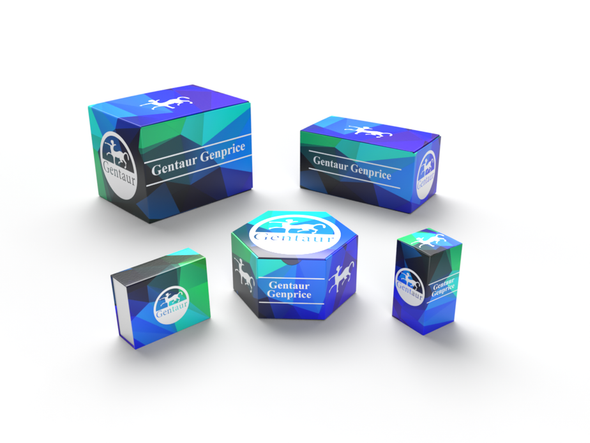749
Human Retinoschisin (RS1) ELISA Kit | KTE60785
- SKU:
- 749-KTE60785
- Availability:
- Usually ships in 5 working days
Description
Human Retinoschisin (RS1) ELISA Kit | KTE60785 | Gentaur UK, US & Europe Distribution
Application: This Human Retinoschisin (RS1) ELISA Kit employs a two-site sandwich ELISA to quantitate RS1 in samples. An antibody specific for RS1 has been pre-coated onto a microplate. Standards and samples are pipetted into the wells and anyRS1 present is bound by the immobilized antibody. After removing any unbound substances, a biotin-conjugated antibody specific for RS1 is added to the wells. After washing, Streptavidin conjugated Horseradish Peroxidase (HRP) is added to the wells. Following a wash to remove any unbound avidin-enzyme reagent, a substrate solution is added to the wells and color develops in proportion to the amount of RS1 bound in the initial step. The color development is stopped and the intensity of the color is measured.
Detection Method: Colorimetric
Conjugate: N/A
Sample Type: Cell culture supernatants#Serum#Plasma#Other biological fluids
Assay Type: Multiple steps standard sandwich ELISA assay with a working time of 3-5 hours. It depends on the experience of the operation person.
Kit Component: • Human Retinoschisin microplate
• Human Retinoschisin standard
• Human Retinoschisin detect antibody
• Streptavidin-HRP
• Standard diluent
• Assay buffer
• HRP substrate
• Stop solution
• Wash buffer
• Plate covers
Features & Benefits: Human Retinoschisin (RS1) ELISA Kit has high sensitivity and excellent specificity for detection of Human RS1. No significant cross-reactivity or interference between Human RS1 and analogues was observed.
Calibration Range: Please inquire
Limit Of Detection: Please inquire
Usage Note: • Do not mix components from different kit lots or use reagents beyond the kit expiration date.
• Allow all reagents to warm to room temperature for at least 30 minutes before opening.
• Pre-rinse the pipet tip with reagent, use fresh pipet tips for each sample, standard and reagent to avoid contamination.
• Unused wells must be kept desiccated at 4 °C in the sealed bag provided.
• Mix Thoroughly is very important for the result. It is recommended using low frequency oscillator or slight hand shaking every 10 minutes.
• It is recommended that all samples and standards be assayed in duplicate or triplicate.
Storage Instruction: The unopened kit should be stored at 2 - 8°C. After opening, please store refer to protocols.
Shipping: Gel pack with blue ice.
Precaution The product listed herein is for research use only and is not intended for use in human or clinical diagnosis. Suggested applications of our products are not recommendations to use our products in violation of any patent or as a license. We cannot be responsible for patent infringements or other violations that may occur with the use of this product.
Background: Retinoschisin is an extracellular protein that plays a crucial role in the cellular organization of the retina. This protein is assembled and secreted from photoreceptors and bipolar cells as a homo-oligomeric protein complex.Mutations in this gene are responsible for X-linked retinoschisis, a common, early-onset macular degeneration in males that results in a splitting of the inner layers of the retina and severe loss in vision. Retinoschisis is intraretinal splitting due to degeneration. The abnormality may not be clinically manifest until middle life. Affected males show cystic degeneration leading to split in the retina, detachment of the retina, and finally complete retinal atrophy with sclerosis of the choroid. Cystic maculopathy is sometimes the only finding in these patients.
Alternative Names: RS1; RP1-245G19.1; RS; XLRS1; X-linked juvenile retinoschisis protein; retinoschisis (X-linked; juvenile) 1
Search name: RS1; RP1-245G19.1; RS; XLRS1; X-linked juvenile retinoschisis protein; retinoschisis (X-linked; juvenile) 1
Tag: RS1






